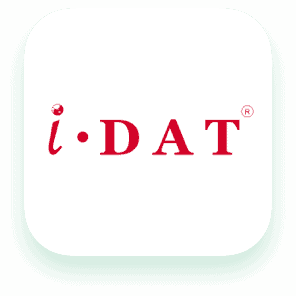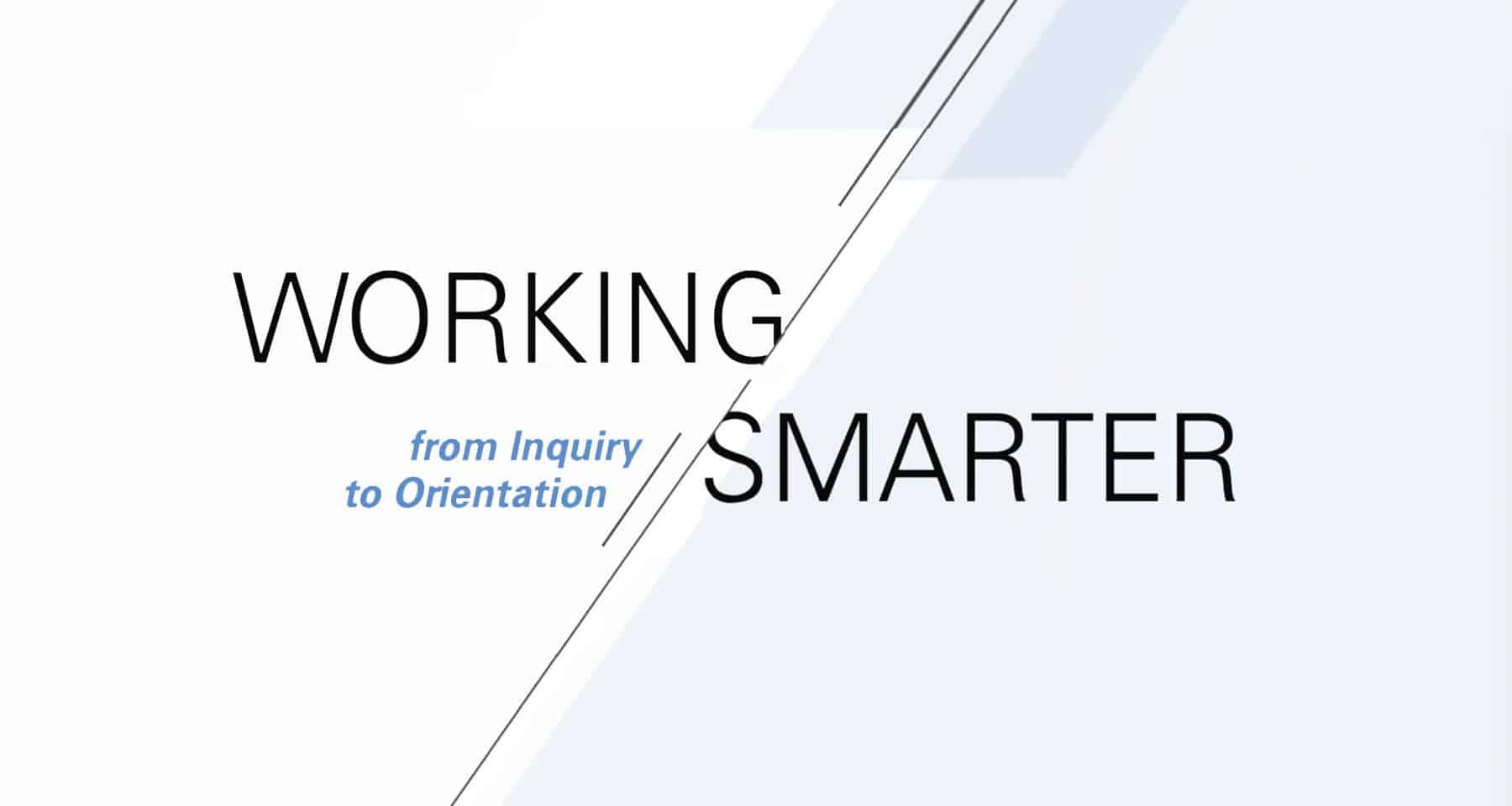from Inquiry to Orientation
“The admission function of any school provides not only the front door to the school and community, it is the lifeblood of the school both at the present and for the future.”
Dr. Dennis Larkin, recently retired Head of School at Lincoln Community School in Accra, Ghana, prior Superintendent at Shanghai American School
T.K. Ostrom and Maria English met in 2007 and worked together at Shanghai American School (SAS) as the Director of Admission and Assessment Coordinator/Admission Manager, respectively. At that time, Shanghai American School was experiencing a time of high growth due to the expansion of a second campus (Pudong campus) as well as a growing population of international families living in Shanghai. Thus, the enrolment at SAS was a strong mix of both new students joining from overseas as well as students transferring from other international schools in Shanghai.
With the increase in demand, the admission staff began to handle an unusually large volume of inquiries, school tours and applications. As the school transitioned to a large organization on two campuses on opposite sides of a large metropolis, being able to work smarter became a high priority. Procedures and practices of the past needed to be further developed to reflect best practice and to meet the challenges of a rapidly growing school organization. Standardizing daily operations and tasks for all admission personnel across both campuses resulted in a streamlined, clear and consistent admission process and improved services to families. These changes resulted in accurate information between the two campuses, more efficient and orderly welcoming of new families and a positive and enthusiastic morale for staff who now were empowered to meet the challenges they faced in a professional and engaging manner. Dr. Dennis Larkin who was Superintendent during this time states, “A strong admission team is essential to the success of any school. Heads of school and school principals should understand the research and best practice standards and procedures for admission programs. The admission office personnel of the school need to be professionals who are well trained and who are highly skilled in implementing the varied and complex functions of the admission and student retention process.
“A professional admission program provides an important foundation for new families and students to the school.”
Standard Operating Procedures (SOP)
At SAS, we found one of the most effective ways to improve the quality of work among office staff, was the implementation of Standard Operating Procedures. This step-by-step instruction manual focused on how to consistently run daily operations within a ‘one school, two campus admission office’. In its basic form, every single operations action is documented on an SOP form from the beginning to end. Answering telephone calls, making tour bookings, inputting data into a database, and compiling application files are just some of the tasks that are common to all admission offices. When these daily tasks are performed routinely and identically by all officers, there is less margin for error and confusion. Everyone on staff is held accountable to the SOP for each task and anyone can step into another admission officer’s caseload and continue the work consistently. This becomes extremely helpful during sick leaves and any long-term leave of office staff as well as becomes the training manual for any new hires.
An SOP is a live document, meaning, that at any time there is a consensus among staff to change the procedure, then it can be amended accordingly. The new version of the SOP is then trialed by colleagues. Upon consensus for the new procedure, it is immediately adopted, replacing the older version. The new procedures were then communicated widely to school staff and families.
As colleagues, we were all accountable to performing the SOP as written. Authoring the SOP was rotated among the team and each SOP needed to be approved by the entire team before being implemented.
Whenever someone (administrator, teacher, current parent, prospective parent) questioned how a task was handled, it was easy for us to refer to our SOP to see whether or not a mistake was made from the admission staff, or not. Thus, there was a sense of trust built into the system as well because of this accountability. As staff, we knew we were accountable not only to the SOP, but to each other. It actually provided a strong sense of teamwork as we tried to find ways to work more efficiently and transparently.
Consistency in Communication
Has your office ever had a prospective parent call multiple times and ask the same questions to different staff? This behavior probably seems pretty normal for you! Often, we can find ourselves in a situation where a prospective client will inquire from more than one person in the admission office
in order to cross check information. It can easily turn into a “he said, she said” situation! As the information hub of the school, a consistent message among admission staff is imperative. Especially during the busy admission season when temperaments, especially from nervous parents, become unpredictable.
At SAS during this high growth period, plus, having two campuses with an admission office on each campus, consistent flow of information and messages (verbal and written) was vital. One way we achieved this was by creating standard emails for general inquiries and template emails for information that was variable such as seat availability and waiting lists. Standard and template emails are simple and efficient tools to communicate general information for inquiries. They can be personalized of course and tailored for each inquiry. In tandem, we also had weekly video conference meetings which were extremely important to check-in with all staff to ensure the consistency of our communication to parents. Any new messaging (i.e. full grade levels, waiting list information) needed to be documented and kept current so all staff was saying the same thing to all inquiring families.
Additionally, for applicants who were already in our database either as an inquiry or application, we had a section of comments where we could cut and paste any email communication, or document any verbal conversation an officer had with the family. This approach to record keeping in “real time” became extremely useful when parents may have heard your message differently than what you said! We could always refer to the documented conversation or email as a reference point. For any difference of opinions, the documentation was extremely important for the Director’s involvement.
In-housing Orientation Events
Let’s be honest; Orientation Day can be chaotic. What we did at SAS was bring Orientation back into Admissions and ran the event in a consistent manner across campuses and across divisions. We found that when the different school divisions had the responsibility or freedom to plan and implement orientation programs the result was three related but different silos acting apart from one another, parents (especially those with children in more than one division) could easily be misinformed. Additionally, as the admission staff had already developed a relationship with the new families during the admission process, it was very natural for Admission to be the first face the families encountered when they came to join the school.
Families were first given an Orientation with school-wide departments (Athletics and Activities, Cafeteria, Communications and Marketing, PTSA, Nurses, Safety and Security, etc.) to understand the broader perspective of how the school functioned. Afterwards, students could join their divisions to focus on meeting their teachers and new friends. Taking over Orientation gave Admission the ability to properly hand over the fully informed families to the divisions ready to start their school journeys. This gave a real sense of closure of the admission process and parents and students were now ready to focus on engaging with the school community.
We found during this time of rapid change at SAS, the implementation of these initiatives provided the admission office with much better ways to promote consistent communication and value-related information. These efforts enhanced our experience for families and in return, we were able to overreach our targeted enrolment and increase the positive word of mouth within the Shanghai community and beyond.
Quality of work most definitely reduces the quantity of work. Working smarter does not necessarily mean working harder and it’s important to differentiate between the two. Having a strong operational foundation in the admission office builds trust and accountability for performance. Continually keeping lines of communication open between staff, valuing what each staff brings to the table builds trust. Bringing families from start (inquiry) all the way to the end of the admission process (Orientation) in a professional and caring manner brings credibility and a good reputation that will follow you into your next school.
















 All Services
All Services


